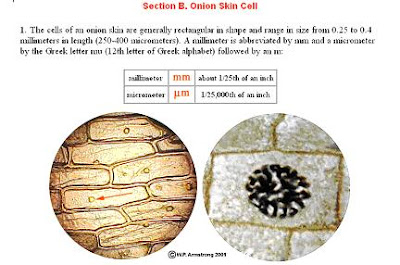The cell is the basic unit of all organism. It is made up of a cell membrane that encloses the cytoplasm.
Contained within the cytoplasm are not only the nucleus but also organelles, whose specific functions help the cell perform a range of activities.
While plant and animal cells are similar, the plant cell has, in addition to the cell membrane, another boundary that separates it from its external environment. This is called the cell wall.
As most plant cells carry out photosynthesis - the synthesis of organic substances - they contain chloroplasts.
In plant cells, vacuoles also tend to be larger in size and smaller in number than those found in animal cells.
Onion Skin Cell

Cheek Squamous Epithelial Cells

Typical Plant Cell

Typical Animal Cell

In the laboratory, you have learned how to prepare a microscope slide of human cheek cells as well as the epidermal cells of onions.
a) The differences you can observe between the two types of cells in term of the following:
No chloroplasts can be observed in the epidermal cells of onions because epidermal cells do not carry out photosynthesis.

Typical Plant Cell

Typical Animal Cell

In the laboratory, you have learned how to prepare a microscope slide of human cheek cells as well as the epidermal cells of onions.
a) The differences you can observe between the two types of cells in term of the following:
- Shape
Onion cells have a regular shape while cheek cells have an irregular shape. - Presence or absence of cell wall
Onion cells have a cell wall while cheek cells do not. - Presence or absence of vacuoles
Onion cells have a large vacuole while vacuoles in cheek cells, if present, are small.
No chloroplasts can be observed in the epidermal cells of onions because epidermal cells do not carry out photosynthesis.